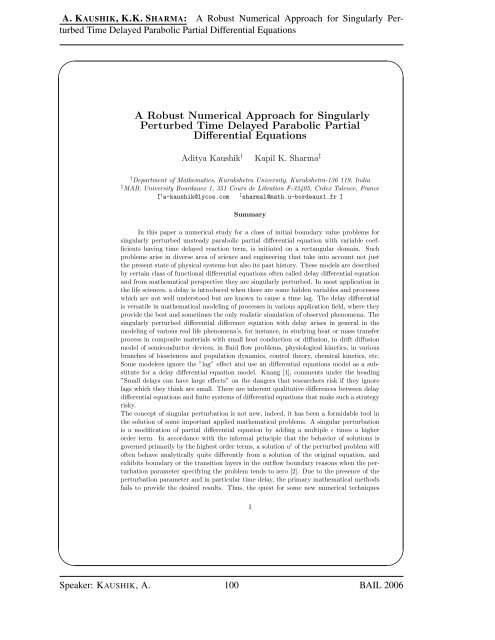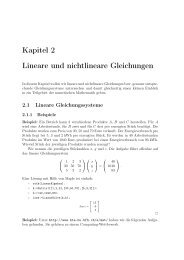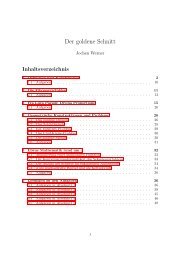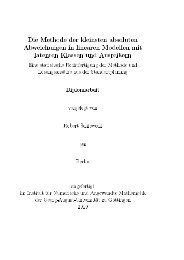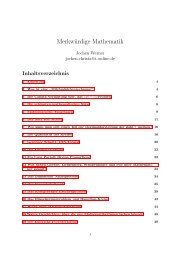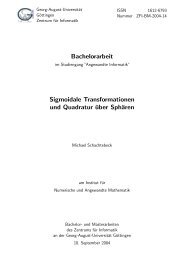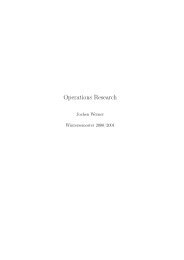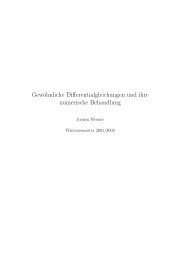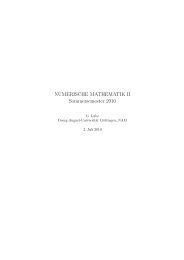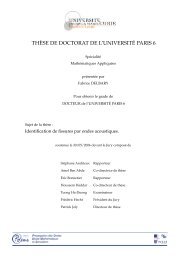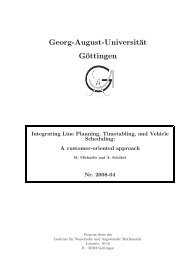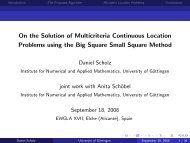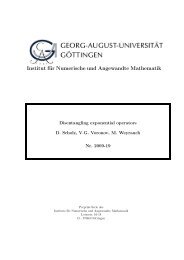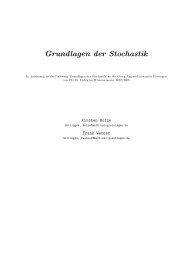BAIL 2006 Book of Abstracts - Institut für Numerische und ...
BAIL 2006 Book of Abstracts - Institut für Numerische und ...
BAIL 2006 Book of Abstracts - Institut für Numerische und ...
You also want an ePaper? Increase the reach of your titles
YUMPU automatically turns print PDFs into web optimized ePapers that Google loves.
A. KAUSHIK, K.K. SHARMA: A Robust Numerical Approach for Singularly Perturbed<br />
Time Delayed Parabolic Partial Differential Equations<br />
✬<br />
✫<br />
A Robust Numerical Approach for Singularly<br />
Perturbed Time Delayed Parabolic Partial<br />
Differential Equations<br />
Aditya Kaushik † Kapil K. Sharma ‡<br />
† Department <strong>of</strong> Mathematics, Kurukshetra University, Kurukshetra-136 119, India<br />
‡ MAB, University Bourdauex 1, 351 Cours de Libration F-33405, Cedex Talence, France<br />
[ † a-kaushik@lycos.com ‡ sharmal@math.u-bordeaux1.fr ]<br />
Summary<br />
In this paper a numerical study for a class <strong>of</strong> initial bo<strong>und</strong>ary value problems for<br />
singularly perturbed unsteady parabolic partial differential equation with variable coefficients<br />
having time delayed reaction term, is initiated on a rectangular domain. Such<br />
problems arise in diverse area <strong>of</strong> science and engineering that take into account not just<br />
the present state <strong>of</strong> physical systems but also its past history. These models are described<br />
by certain class <strong>of</strong> functional differential equations <strong>of</strong>ten called delay differential equation<br />
and from mathematical perspective they are singularly perturbed. In most application in<br />
the life sciences, a delay is introduced when there are some hidden variables and processes<br />
which are not well <strong>und</strong>erstood but are known to cause a time lag. The delay differential<br />
is versatile in mathematical modeling <strong>of</strong> processes in various application field, where they<br />
provide the best and sometimes the only realistic simulation <strong>of</strong> observed phenomena. The<br />
singularly perturbed differential difference equation with delay arises in general in the<br />
modeling <strong>of</strong> various real life phenomena’s, for instance, in studying heat or mass transfer<br />
process in composite materials with small heat conduction or diffusion, in drift diffusion<br />
model <strong>of</strong> semiconductor devices, in fluid flow problems, physiological kinetics, in various<br />
branches <strong>of</strong> biosciences and population dynamics, control theory, chemical kinetics, etc.<br />
Some modelers ignore the ”lag” effect and use an differential equations model as a substitute<br />
for a delay differential equation model. Kuang [1], comments <strong>und</strong>er the heading<br />
”Small delays can have large effects” on the dangers that researchers risk if they ignore<br />
lags which they think are small. There are inherent qualitative differences between delay<br />
differential equations and finite systems <strong>of</strong> differential equations that make such a strategy<br />
risky.<br />
The concept <strong>of</strong> singular perturbation is not new, indeed, it has been a formidable tool in<br />
the solution <strong>of</strong> some important applied mathematical problems. A singular perturbation<br />
is a modification <strong>of</strong> partial differential equation by adding a multiple ǫ times a higher<br />
order term. In accordance with the informal principle that the behavior <strong>of</strong> solutions is<br />
governed primarily by the highest order terms, a solution u ǫ <strong>of</strong> the perturbed problem will<br />
<strong>of</strong>ten behave analytically quite differently from a solution <strong>of</strong> the original equation, and<br />
exhibits bo<strong>und</strong>ary or the transition layers in the outflow bo<strong>und</strong>ary reasons when the perturbation<br />
parameter specifying the problem tends to zero [2]. Due to the presence <strong>of</strong> the<br />
perturbation parameter and in particular time delay, the primary mathematical methods<br />
fails to provide the desired results. Thus, the quest for some new numerical techniques<br />
Speaker: KAUSHIK, A. 100 <strong>BAIL</strong> <strong>2006</strong><br />
1<br />
✩<br />
✪


